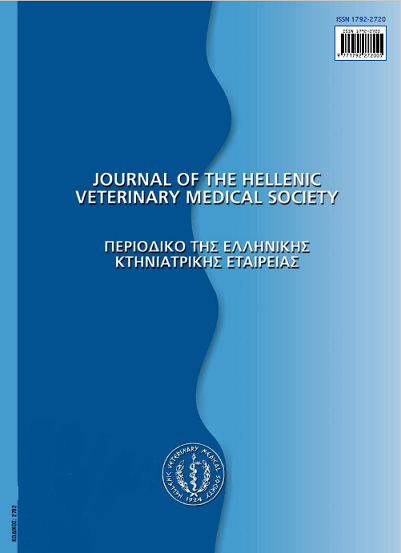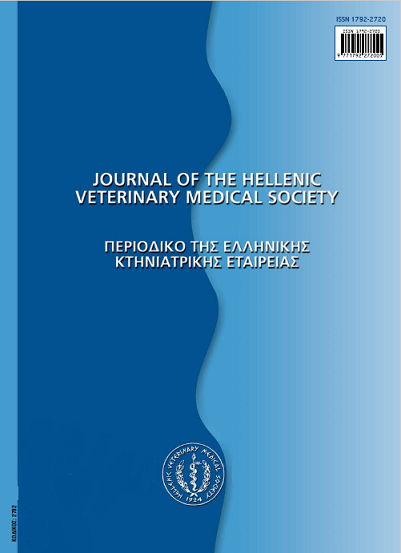Induction of oestrus in ewes of the rare Greek breeds Skopelos, Zakynthos, Kymi - Electrical resistance of cervical mucous

Abstract
Objective of the study was the investigation of the response of Skopelos, Zakynthos and Kymi ewes to oestrus induction treatment. Furthermore, feasibility of measuring electrical resistance of cervical mucus for oestrus detection was examined. Oestrus was induced by intravaginal insertion of sponges impregnated with 60 mg medroxyprogesterone acetate for 12 days [groups: Skopelos (n=17), Zakynthos (n=18), Kymi (n=22)], followed by intramuscular injection of 400 iu equine chorionic gonadotropins) at the time of withdrawal. Blood samples were collected 10 days before sponge insertion, at insertion and withdrawal and at oestrus for measurement of oestradiol 17-β and progesterone concentration. Electrical resistance of cervical mucus was measured after οestrus detection, then ewes were mated. Proportion of Zakynthos ewes (100%) in oestrus was greater than that of Kymi (64%) or Skopelos (78%) ewes. Pregnancy rate ranged from 50% (Kymi ewes) to 67% (Skopelos ewes). Electrical resistance of cervical mucus of ewes that conceived was significantly smaller than of those that did not. Based on results of progesterone blood concentration measurement 10 days before and at sponge insertion, only Kymi ewes were at full anoestrus, whilst Zakynthos and Skopelos ewes were in the breeding season. Progesterone blood concentration at sponge withdrawal and oestradiol 17-β blood concentration at oestrus were significantly greater in Zakynthos ewes that conceived compared to those in ewes that did not conceive. Furthermore, progesterone concentration at sponge insertion was significantly greater in all ewes that conceived compared to that in ewes that did not. There were significant differences in oestradiol-17β and progesterone blood concentrations among breeds and at the various time-points of blood collection. It is concluded that response of the above sheep breeds to oestrus induction was satisfactory. Hormonal status of ewes during sponge insertion is of importance for conception. Measurement of electrical resistance of cervical mucus could be useful for selection of ewes for mating, even if rams used to detect oestrous.
Article Details
- How to Cite
-
TSILIGIANNI (Θ. ΤΣΙΛΙΓΙΑΝΝΗ) T. (2017). Induction of oestrus in ewes of the rare Greek breeds Skopelos, Zakynthos, Kymi - Electrical resistance of cervical mucous. Journal of the Hellenic Veterinary Medical Society, 65(1), 23–30. https://doi.org/10.12681/jhvms.15509
- Issue
- Vol. 65 No. 1 (2014)
- Section
- Research Articles
Authors who publish with this journal agree to the following terms:
· Authors retain copyright and grant the journal right of first publication with the work simultaneously licensed under a Creative Commons Attribution Non-Commercial License that allows others to share the work with an acknowledgement of the work's authorship and initial publication in this journal.
· Authors are able to enter into separate, additional contractual arrangements for the non-exclusive distribution of the journal's published version of the work (e.g. post it to an institutional repository or publish it in a book), with an acknowledgement of its initial publication in this journal.
· Authors are permitted and encouraged to post their work online (preferably in institutional repositories or on their website) prior to and during the submission process, as it can lead to productive exchanges, as well as earlier and greater citation of published work.



